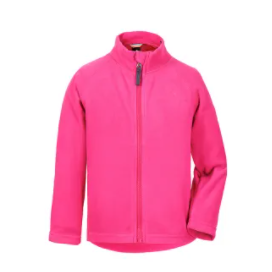As the colder months settle in, the quest for warmth becomes a top priority, and fleece jackets emerge as cozy contenders in the realm of winter wear. But the pressing question remains: Do fleece jackets keep you warm?

1. Understanding Fleece Fabric:
1.1 Composition:
1.2 Loft and Pile Structure:
2. Insulating Power of Fleece:
2.1 Thermal Efficiency:
2.2 Moisture Management:
Fleece has excellent moisture-wicking properties, pulling sweat away from the body and allowing it to evaporate. This feature is crucial in maintaining warmth, as wet clothing can lead to a rapid loss of body heat.
3. Weight and Warmth Ratio:
3.1 Lightweight Insulation:
3.2 Layering Potential:
4. Breathability and Comfort:
4.1 Breathable Fabric:
5. Types of Fleece:
5.1 Microfleece:
5.2 Polartec Fleece:
6. Considerations and Limitations:
6.1 Wind Resistance:
6.2 Water Repellency:
Fleece itself is not inherently water repellent. In wet conditions, it may become saturated, reducing its insulation properties. Water-resistant coatings or combining fleece with a waterproof layer can address this limitation.
In conclusion, fleece jackets are indeed effective at keeping you warm, owing to their lofted structure, thermal efficiency, and moisture-wicking capabilities. The versatility, breathability, and lightweight design make fleece a popular choice for various cold-weather activities. However, understanding the specific type of fleece, its intended use, and potential considerations such as wind and water resistance are key to maximizing its warmth-retaining potential. When chosen and used appropriately, a fleece jacket can be your snug and reliable companion in the face of winter's chill.



Comments
All Comments (0)